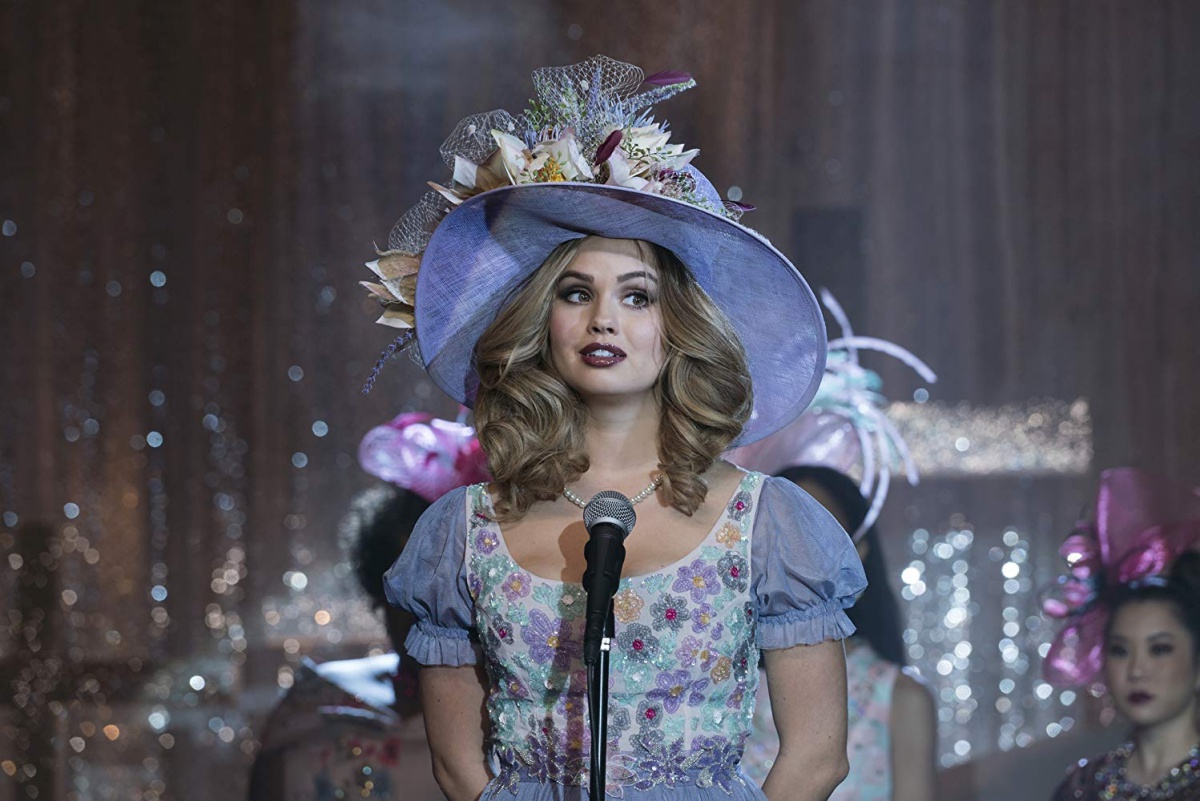I Watched All of Insatiable in a Night, and I’m Worse for It
Insatiable might have worked better if the writers actually watched Santa Clarita Diet.

Here’s what happened: I turned on Netflix’s Insatiable because I needed to know if it could really be as oblivious and off-the-mark as the trailer portrayed it, and as I’ve read about it elsewhere. Ten minutes in, I already knew I had made a big mistake. It was enough to have Patty Bladell (Debby Ryan) narrating, but it quickly became apparent that everyone would get the chance to give their inner monologues and illuminate the depth of their characters—which, I realized, was because the acting could not. Going in, I knew about the fat suit and the unnecessary leaning into body-shaming tropes for “satire’s sake,” but there’s just so much else to hate about it.
I understand what the team was going for. They thought they’d pull off a satirical dark comedy that used campiness to comment on the nature of society. Or, at least, that’s what I could pull out of the wreckage that is Insatiable. I think the best way to really describe how they failed is to point to another Netflix show (starring Patty’s favorite person in the universe) that did what they couldn’t: Santa Clarita Diet, the Drew Barrymore-led series about an undead working mom hits all the marks of a dark comedy.
The premise on its own is petty ridiculous: A normal suburban mom turns into a zombie who craves human flesh and has to make it all work—normal on the outside, a monster on the inside—but under that is another classic narrative of a woman trying to “have it all,” as they say. Santa Clarita Diet chooses to play on that idea.
Barrymore’s character is messy and flawed—I mean, she eats people—but the series manages to use an over-the-top story to give her the space to grow and battle with her desires while letting the campiness compliment the message, not overtake it. All the parts fit together really well … unlike Insatiable. The characters in Insatiable make a point of mentioning Santa Clarita Diet, so I know they watched it, which has me thinking, “Why didn’t the writers?”
Insatiable starts off with a premise that it doesn’t manage to veer away from, really. The idea here is that a fat girl turns skinny and feels that the only way to truly be happy is to win a beauty pageant. I figured the real message would be that Patty would end up realizing that she doesn’t need other people to make her feel good about herself, which is something that I didn’t care to see, either.
Instead, they decidec to play with the idea that no matter what she looks like on the outside, she might just be a terrible person on the inside—which, OK, I’m with you, except that the show weaves in and out of that narrative like a drunken frat boy trying to make his way home. Half the time, Patty is trying to come to terms with the idea that she’s not fat anymore and feeling comfortable in her own body, and the other half, she’s totally cool and confident in her new skin and just being terrible, all with some classic Daddy issues and fears of abandonment piled on.
I’m not saying that complex characters are a bad thing, because it’s normal for people to stumble or feel different things at the same time, but when you’re writing a television character, it needs to be grounded in something, and I don’t think Insatiable quite figured that out.
On the other hand, Santa Clarita Diet, while not having a tightrope walk of a premise to start out with, does have a foolish one, but the story is grounded very much in the idea that motherhood and womanhood are complicated. It also plays with the idea that society has a set of rules for women, and even the strongest among us sometimes unwittingly fall prey.
Barrymore’s character is a great mother and a great wife, who has a profession of her own that she’s great at, but she doesn’t realize all the ways she was limited, or all the times she bit her tongue, until she turns undead and her inhibitions start to fade. There’s something to follow there and relate to, even if the premise is a little campy. But Insatiable is missing a buoy, and all the parts start to weight the ship down and sink it very very quickly.
Satire isn’t easy to pull off, but if you’re going to make a TV show where the premise rides a very thin line between okay and offensive, then maybe pare it down a little and focus on the parts you want to come through. By the end of the first season (which I’m guessing will be the only season) I wasn’t even sure what I was watching anymore or why I had kept with it at all. But, I need to mention one saving grace: Kimmy Shields, who plays Patty’s best friend, Nonnie.
They should spin off the show and let Nonnie lead. That is all.
(image:Netflix)
Want more stories like this? Become a subscriber and support the site!
—The Mary Sue has a strict comment policy that forbids, but is not limited to, personal insults toward anyone, hate speech, and trolling.—
Have a tip we should know? tips@themarysue.com